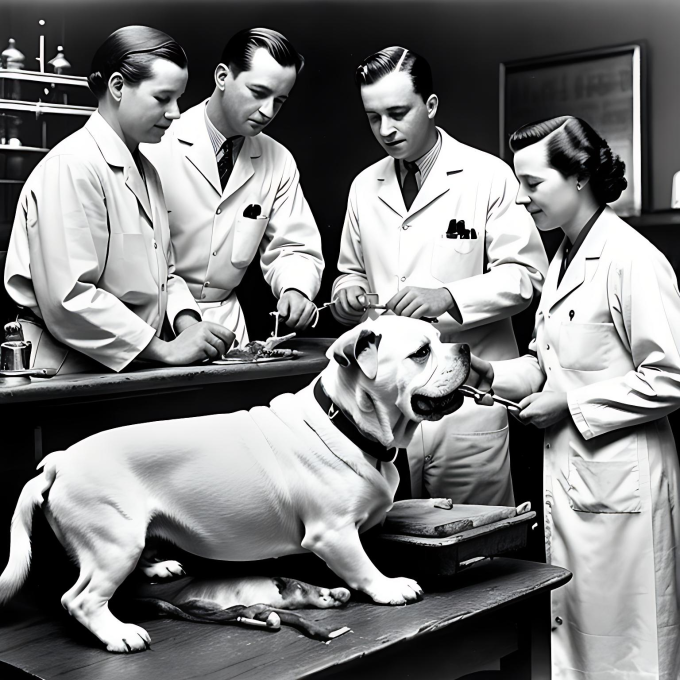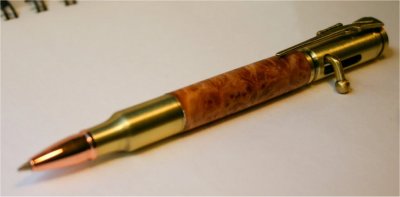A sensational genetic research project is underway to breed a dog with a birth-defect in EVERY bodily system.
Geneticists at several major universities believe that it’s possible to breed a birth defect into every single organ and body structure, and STILL have the pets live! Although, a debilitated and painful life, for at least a few years. The popular fallacy was that breeding a deformity into every bodily system would kill the embryos immediately after implantation in utero, or prevent implantation altogether.
Researchers at Eugene College of Veterinary Medicine examine one of the first offspring of an artificial insemination of a dog with Cleft Palate and a dog with a cardiac septal defect. Researchers noted that the nasal planum of the offspring is dramatically shortened and the soft palate in the back of the throat broadens to occlude most of the retropharynx. This is an exciting development. | |
Another dog from the same litter was used to sire another puppy from the same parent stock in a genetic process called "Line Breeding" or "Line Cross" which helps create indelibilty in the genetics. Researchers here are answering to the constable about the genetic research and why the animals seem to be in so much difficulty breathing. | |
Dr Bowen and his assistant Jordan Nash are about to collect a sample of the genetics of a dog suffering with "Chondrodysplasia" which is a malformation of the forelegs. This is a cartilage and bone deformity that's heritable, and should show up well in the new breed the researchers hope to produce. | |
Nancy Folsum is bringing in her dog, Ruff for genetic sampling. Ruff has "Spina Biffida" or a defect in the "neural tube" where the sacrum joins the lumbar spine, which in Ruff's case, never closed. Ruff has no tail and he also has a deformed sacrum, as well as a malformed Pelvis. Researchers are hopeful that they can instill this genetic phenotype into the new breed. So far the results look very good. In most offspring the tails are either gone or almost-so. The hips are dysplastic and the sacrum is either open or incomplete in a percentage of cases. | |
Dr Aaron Sturgiss from Louiville College of Veterinary Medicine is bringing a dog with hereditary Juvenile Onset Hypothyroidism from a clinic nearby. He also brings a dog with a liver shunt and which remained extremely small since birth from the same litter. The researchers of the new breed are hoping to bring a measure of liver deformity and early onset hypothyroidism to the new breed. Again, results so far are very encouraging with many puppies developing hepatic lipidosis and hypothyroidism on par with ten times the incidence of every other breed. | |
The Guinness Book of World Records recognizes Dr Instead and his lab partner Dr Brenda Owling for their success in breeding "The Most Genetic and Congenital Deformities in One Dog" on the globe. Researchers are starting to wonder if the research to create a defect in every bodily system is worthwhile or humane, and if it's even possible. Dr Instead and Owling both enthusiastically claim that they can deform every system. They're homing in on the name "English Bulldog" for the new breed. | |
Four of the nations top researchers are finishing up the tabulation of birth defects that they were able to create in one dog. 1. Brachycephalic Airway Syndrome | |
The breed improves every year, with new disorders being added to the list of common conditions, suffered by the breed, including fold pyoderma's of the face, fold pyoderma's at the tail, a dramatic propensity, to obesity, and a high incidence of ear infections. |
I find it amazing that this research can be carried out and this dog breed could be developed, without the consternation of any of the following organizations:
It is stunning that there has not been a moratorium on the breeding of this animal. The suffering it endures through its lifetime is unmitigated.
1. The Humane Society of the United States
2. The American Society for the Prevention of Cruelty to Animals (ASPCA)
3. The Royal Society for the Prevention of Cruelty to Animals (RSPCA)
4. The International Companion Animal Management Coalition (ICAM)
5. The World Society for the Protection of Animals (WSPA)
6. The Animal Welfare Institute (AWI)
7. The Humane Society International (HSI)
8. The Animal Legal Defense Fund (ALDF)
9. The Best Friends Animal Society
10. The National Canine Research Council (NCRC)













